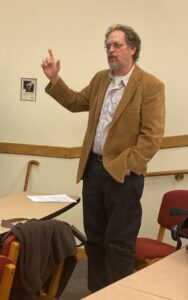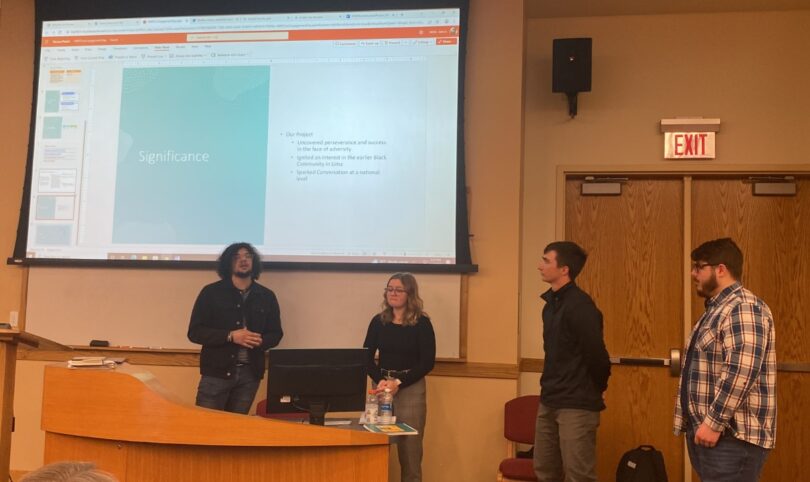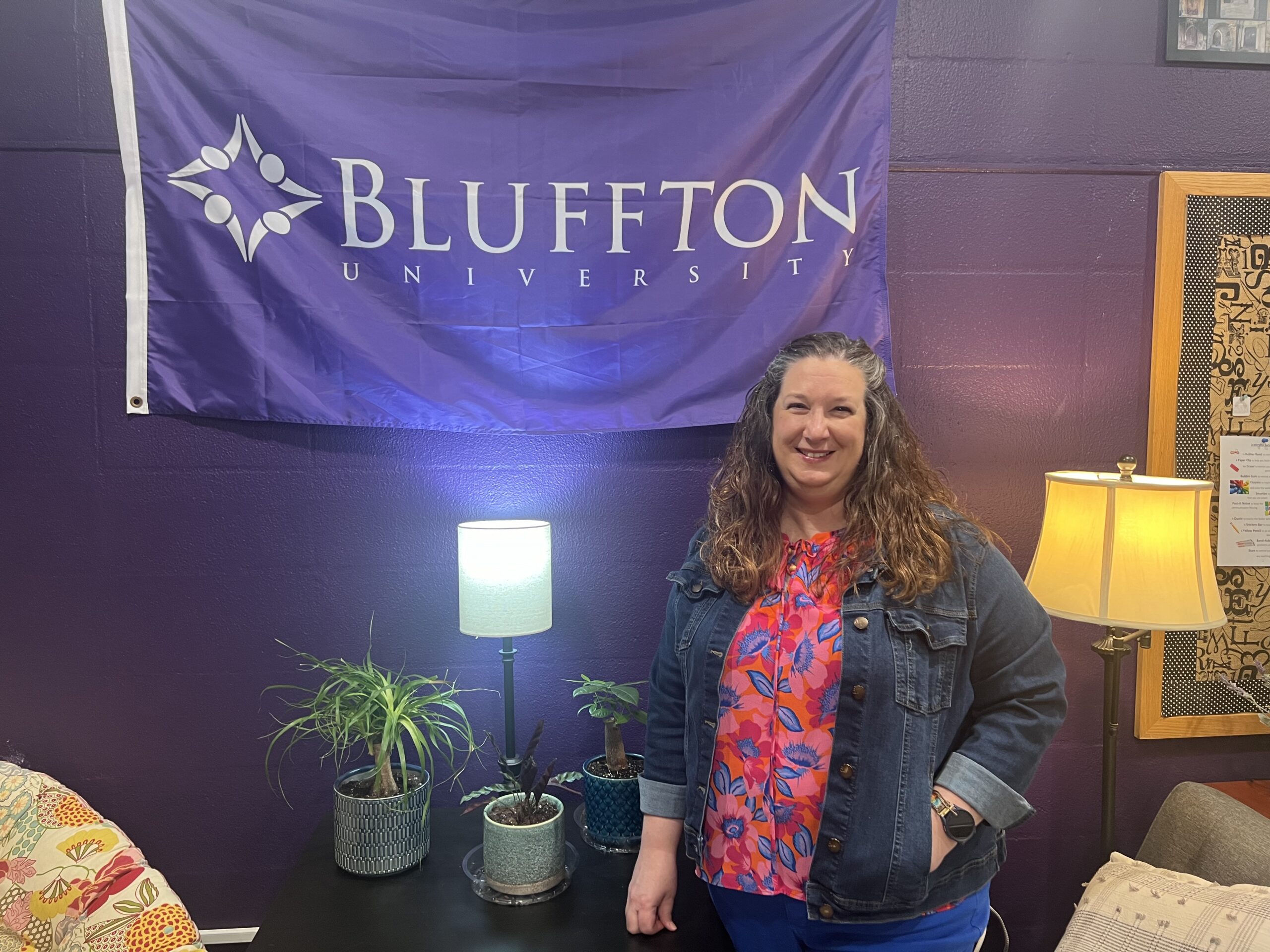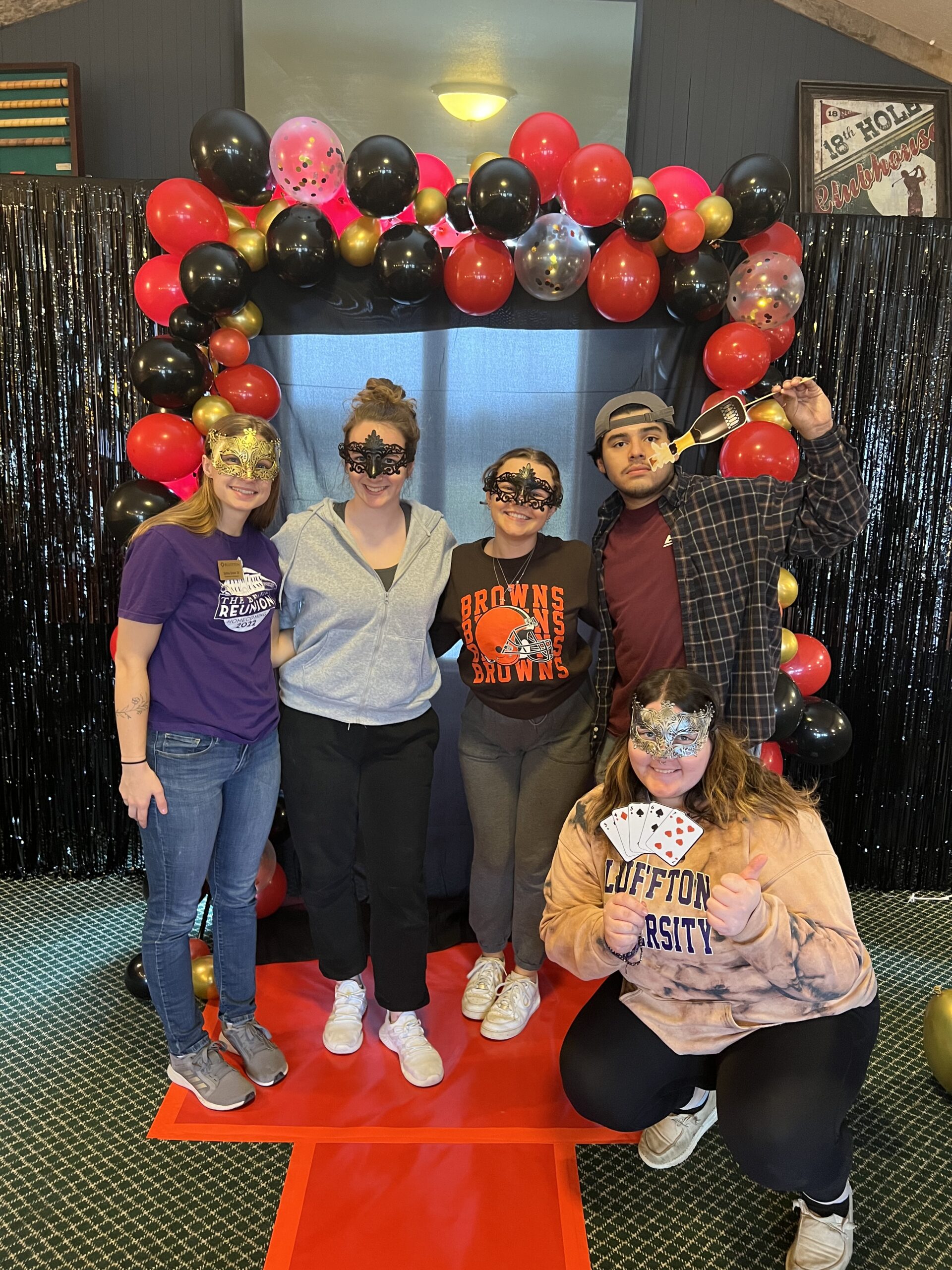The HIS 300 Theory and Application class presented on their findings of a Lima neighborhood heavily affected by Jim Crow-like policy as a part of Bluffton University’s Civic Engagement Day.

Dr. Perry Bush introducing the “Uncovering Jim Crow in Lima” Civic Engagement Day presentation. Photo by Olivia Daugherty.
The group of Garrett Rice, Anton Miller, Michael Stuff and Macey Thomas presented on “Uncovering Jim Crow in Lima.” The group focused on their findings, explaining the project “Neighborhood Reconstructive Project” assigned by Dr. Perry Bush. Bush, professor of history, who introduced the group.
“What these researchers do is something akin to time-travel,” said Bush in his introduction.
The project examines old Lima neighborhoods, starting in 1903 and ending in 1940, and looks into the data of the residents of six houses. This year, the class focused on the Far West End Neighborhood.
Bush first taught this class in 1996 and has taught it over 14 times. However, what makes this group unique is that their neighborhood was over 80% Black—in comparison, the highest percentage before was 7%.
“We were expecting that people had already found Black neighborhoods, I’m not gonna lie,” said Miller, a junior history major.
The group went to the Allen County Museum and looked into the city directory for their neighborhood. They then used Ancestry.com to look at the census, graves, and obituaries to piece together the lives of their residents.
“The more I got into this [the project,] the more I realized that this wasn’t what I expected at all,” said Stuff, a sophomore history major. “This is completely different than what I expected this neighborhood to be. This is really neat.”
The research showed an extensive racial divide in Lima, with most of the Black community at the time being concentrated in the Far West End Neighborhood.
“On Ancestry.com, you can see the Jim Crow status in Lima—not just in Lima, but the whole country, from the U.S. Census data,” said Stuff. “You can see how badly these men and women were treated on a public domain.”
The project’s focus on the racial divide in Lima at the time sparked controversy. After extensive media coverage occurred about the group’s findings, they received both positive and negative feedback online.
The group shared some of the comments, with one claiming that the research was not important. However, this did not stop the group’s findings to inspire. Lima mayor Sharetta Smith was in attendance of the presentation and spoke with the group afterwards.
“I was delighted she came,” said Bush.
Miller and Stuff agreed, mentioning how they would have been even more nervous.
“I even stopped her and asked ‘Did we represent your town well?’ ” said Miller.
Each person presented on a specific person who they found interesting. For Miller, that person was Robert Patterson. Miller described Patterson’s life as “Black excellence.”
“He started out as just a farm boy in Darke County, Ohio, which isn’t the richest region of the country,” said Miller in their presentation.
Patterson then went on to be a teamster, or a carriage driver in Lima. By the end of Miller’s data set, Patterson was a funeral home director.
“My heart kinda sunk when I realized I had to write about more families too,” said Miller. “His life was so interesting to me. I was looking back at his parents’ lives, his wife’s life.”
According to Rice, this was the hardest history course he has taken. However, the stress and work were worth it.
“Had we not gone any further than just doing our projects, I doubt anyone would have known there was a Black neighborhood in Lima with many middle-class to upper-class people,” said Miller.
Editor’s note: This article was produced as part of an assignment for MED 225 Writing for the Media.







